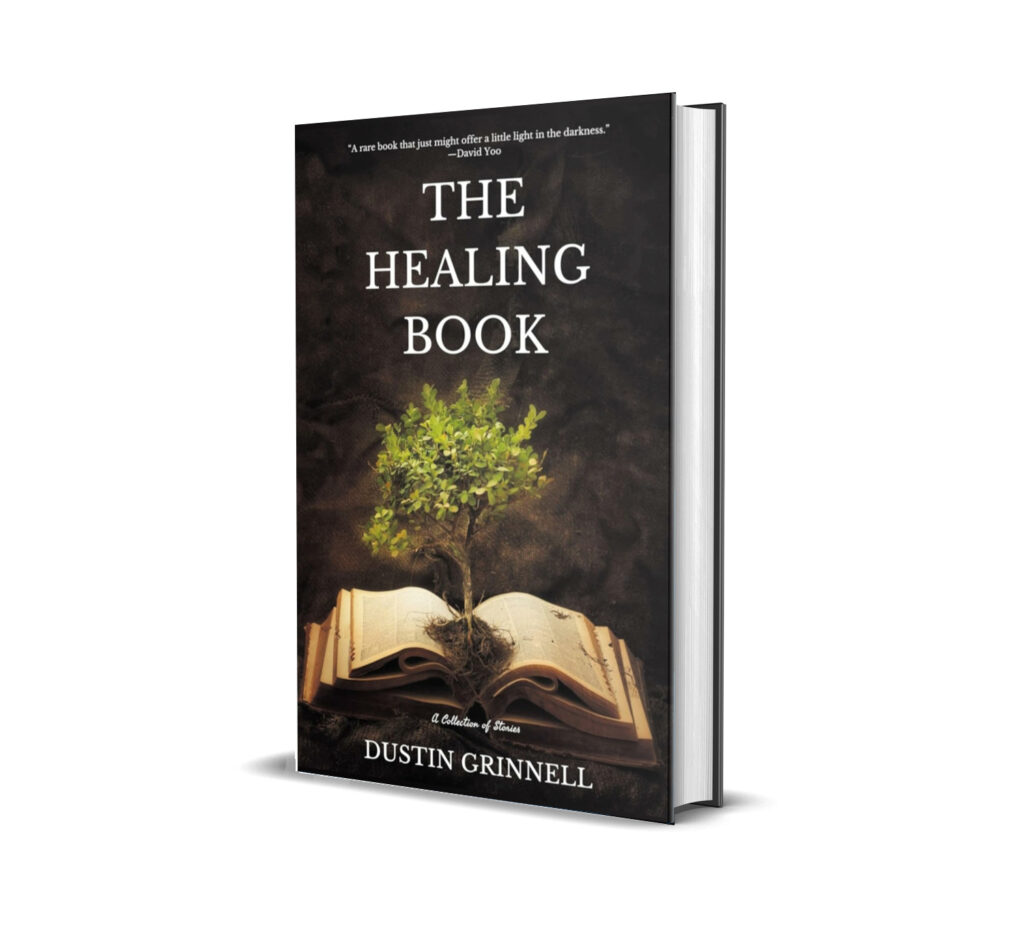The Healing Book
Author: Dustin Grinnell
Publisher: Finishing Line Press
Rating: 4/5
I recently had the pleasure of reading The Healing Book, and I was utterly captivated by its luminous collection of stories. Each narrative, nestled in the delicate spaces between loss, failure, and redemption, resonates deeply, offering profound insights into the human condition.
What struck me most was the fluent and graceful writing style that seamlessly carries the reader through the varied experiences of the characters. The stories, whether it’s the neurosurgeon embarking on a soul-searching journey in Peru or the office worker rediscovering peace on the Appalachian Trail, are crafted with such charm and authenticity that I found myself fully immersed in their worlds.
One of the most compelling aspects of The Healing Book is its rich tapestry of varied storylines and significant story arcs. Each tale is unique, yet they all share a common thread of profound emotional depth and introspection. From the haunting journey of a soldier grappling with PTSD to the heartwarming story of a grandmother reconnecting with her estranged family through gardening, the diversity in narratives ensures that there is something for everyone. The significant story arcs are meticulously developed, allowing readers to witness the full spectrum of human experiences and emotions. This variety not only keeps the reader engaged but also highlights the myriad ways in which healing and self-discovery can manifest. Each story, with its distinct voice and setting, contributes to a cohesive collection that is as enriching as it is enlightening.
The heart of the collection lies in its ability to convey the essence of healing through its characters’ journeys. In “The Healing Book,” a physician’s quest to write a book that would cure his wife’s terminal cancer poignantly illustrates the limits of human intervention and the power of presence and acceptance. Stories like “Cured” and “An Affable Man” delve into the protagonists’ quests for personal fulfilment and their often unexpected paths to find peace and meaning.
Moreover, the theme of writing as a form of healing weaves through many of these stories, reflecting the author’s experiences and insights. Characters who write—be it a therapist documenting a patient’s struggle with aphantasia or a journalist finding his voice—serve as conduits for exploring deeper truths and personal revelations. This aspect of the book resonates strongly with anyone who has turned to writing to process life’s challenges and find clarity.
The Healing Book not only offers a window into the complexities of modern life but also provides a moment of reflection for readers in their search for understanding and personal growth. Each story serves as a reminder of the resilience of the human spirit and the transformative power of narrative. I wholeheartedly recommend this book to anyone looking for a moving and enlightening read.
Find this book here.

